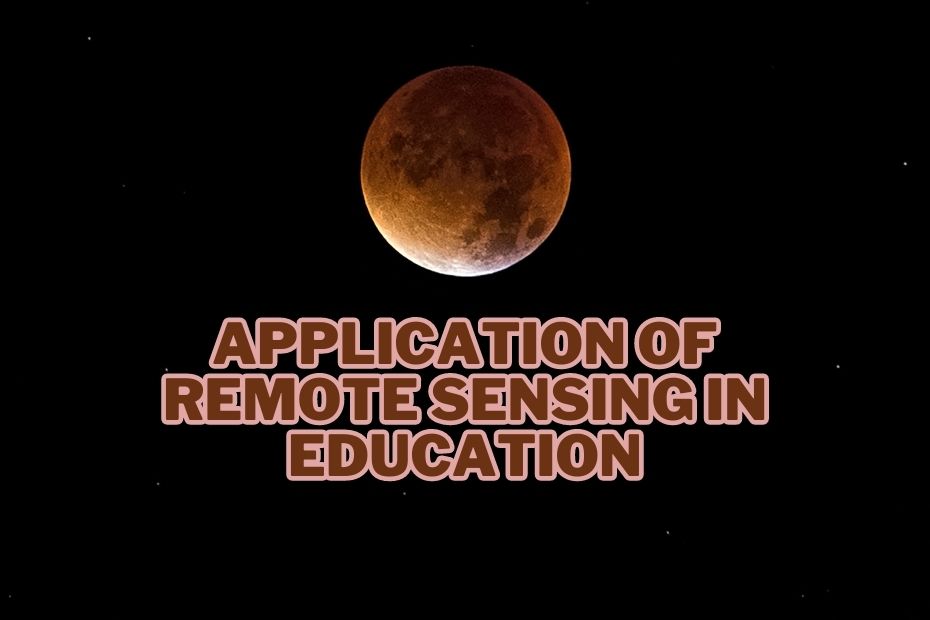The rapid development of technology has carved a novel pathway in the field of education, especially in understanding our planet and the processes that govern it. An exceptional tool that has emerged is Remote Sensing, a scientific method that acquires data and information about objects or areas from a distance. This article will provide you with a deep dive into the profound application of Remote Sensing in Education.
Remote Sensing applications in education are revolutionary, allowing learners to study Earth’s patterns and changes in unprecedented detail. It facilitates studying climate change, land use, environmental monitoring, and geology.
It’s increasingly used in curriculums to promote STEM learning, critical thinking, and global awareness, preparing students for future challenges and careers in this rapidly evolving field.
Why is Remote Sensing Important in Education?
The question that might be on your mind now is – why do we need remote sensing in education? Well, remote sensing brings in an enhanced level of learning by providing real-time data and visuals. It helps students grasp complex concepts, visualize abstract theories, and understand global phenomena. It’s like giving students a pair of super-specs to explore the world!
The Need for Real-Time Data in Learning
Imagine you’re teaching a class about climate change, but instead of just showing static graphs and charts, you’re able to present real-time data of the polar ice caps melting. Now that’s impactful learning!
Application of Remote Sensing In Education
Remote Sensing technology has permeated various disciplines, not only expanding our knowledge horizons but also transforming how we educate our students. Here are several application of Remote Sensing in educational fields.
1. Observing Climate Patterns
Remote Sensing is a powerful tool in observing and understanding global climate patterns. Satellite imagery allows students to observe shifts in global temperature, ice coverage, and vegetation patterns, revealing the impacts of climate change. Data from remote sensing provides tangible evidence to support theoretical climate models, enhancing student’s understanding and awareness of climate issues.
2. Studying Geography
Understanding geographical landscapes, from mountainous terrains to desert expanses, has become more accessible with Remote Sensing. Students can delve into topographic maps and 3D imagery, which offer a comprehensive understanding of earth’s physical features. The clear distinction between Remote Sensing and GIS, allows students to appreciate how these technologies supplement each other in geographical studies.
3. Learning About Weather
Weather prediction has significantly improved with the application of Remote Sensing. Through satellite imagery, students can visualize weather patterns, storm developments, and other atmospheric phenomena. This practical experience reinforces theoretical meteorological concepts, offering a comprehensive understanding of the weather.
4. Exploring Space
The realm of space exploration has been revolutionized through Remote Sensing. High-resolution images of celestial bodies have opened up a new frontier in astronomy education. Remote Sensing data from missions like those of Mars Rover have brought unprecedented detail to planetary studies, fostering a new generation of aspiring astronauts and space scientists.
5. Monitoring Environmental Changes
The importance of biodiversity conservation is often highlighted through the lens of Remote Sensing. Students learn how satellites monitor deforestation, habitat destruction, and changes in biodiversity. It enable students to understand the real-world application of Remote Sensing in environmental protection.
6. Understanding Agriculture
In the field of agriculture, Remote Sensing supports soil conservation, crop monitoring, and farming practices. Educators use this tool to demonstrate agricultural methodologies and strategies, especially in areas such as soil loss alleviation.
7. Analyzing Oceanography
Oceanographic studies have also been uplifted by Remote Sensing. High-resolution satellite data offer insights into ocean currents, temperatures, and biological productivity. Such information is essential for understanding marine ecosystems, climate change, and global warming, presenting students with a complete picture of our planet’s health.
8. Studying Natural Disasters
Remote Sensing’s application in disaster management offers a hands-on approach to understanding natural calamities. From predicting hurricane paths to assessing earthquake damage, students learn the real-world implications of disaster management.
9. Learning about Archaeology
Remote Sensing technology unveils secrets of the past, proving invaluable in archaeological studies. Students can explore ancient civilizations, detect hidden archaeological sites, and understand past landscapes without the need for excavation.
10. Exploring Urban Planning
Urban planning education benefits from Remote Sensing by offering insights into land use, population density, and infrastructure development. Students learn the intricacies of urban design and development, leading to better-planned, sustainable cities of the future.
11. Enhancing Research Skills
Finally, Remote Sensing is a potent tool in enhancing research skills. It encourages students to think critically, analyze complex data sets, and understand advanced computational methods. The ability to work with real-world data allows students to relate their academic learning to practical scenarios.
Conclusion
The revolution of remote sensing in education has brought about a new dawn in learning. From understanding climate change to studying urban planning, the applications are endless and fascinating. It not only bridges the gap between theoretical knowledge and real-world application but also paves the way for a future of interactive, engaged, and empowered learners.
FAQs: Application of Remote Sensing In Education
How does remote sensing benefit education?
Remote sensing enhances education by providing real-world data and imagery that allows students to explore and analyze diverse subjects. It promotes interdisciplinary learning, fosters critical thinking skills, and enables hands-on experiences. Students can understand complex concepts, observe environmental changes, and develop practical skills applicable to multiple fields.
Can remote sensing be integrated into different subjects?
Absolutely! Remote sensing can be integrated into various subjects such as geography, science, mathematics, environmental studies, social studies, and more. It offers opportunities for exploring topics like climate change, urban planning, agriculture, archaeology, health, and space science, among others.
What are the career prospects in remote sensing?
Remote sensing opens up a wide range of career prospects. Graduates can pursue opportunities as remote sensing specialists, GIS analysts, environmental scientists, geospatial analysts, urban planners, geologists, natural resource managers, and researchers in academia, government agencies, private industries, and non-profit organizations.
